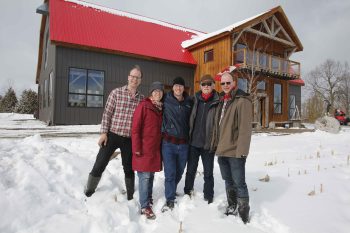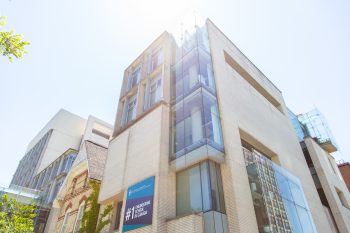A team of civil engineering researchers is working on a plan to increase the efficiency of aging apartment buildings in Toronto by creating an outer perimeter whose temperature varies between the inside and outside temperature.
Nested Thermal Envelope Design, or NTED, is essentially a “building within a building,” said Marianne Touchie, a PhD candidate in Civil Engineering at the University of Toronto.
Touchie delivered a presentation on NTED and how it applies to high-rise residential buildings to an audience of about 120 at the recent Building Envelope Solutions conference, produced by MMPI and held at the On the Park conference centre in Toronto.
NTED, developed by Touchie, U of T Civil Engineering Professor Kim Pressnail and Ryerson University professor Russell Richman, is designed to control air flow, heat flow and moisture transfer.
Touchie said NTED allows the temperature of a perimeter to drift between the core and exterior temperature, using a heat pump between the perimeter and core space.
“Not only are heat losses moving from the core to that exterior captured in that perimeter zone, we’re also able to take advantage of passive solar gains from the exterior,” Touchie said. “By transferring that heat by an interior heat pump, we can use those losses and that potential solar gain to heat the core space.”
Studies have shown energy savings in a single family home of 74 per cent using NTED, she said.
In high-rise apartment buildings, the team is aiming to increase that, though she emphasized this is an “ideal” situation.
“We would like to see the energy use of these buildings reduced on the order of 80 or 90 per cent if we can start to meet the energy demands of these buildings using renewable energy sources,” she said.
About a third of Torontonians live in post-war apartment buildings, most of them constructed between the 1950s and 1980s when energy costs were lower, she said.



